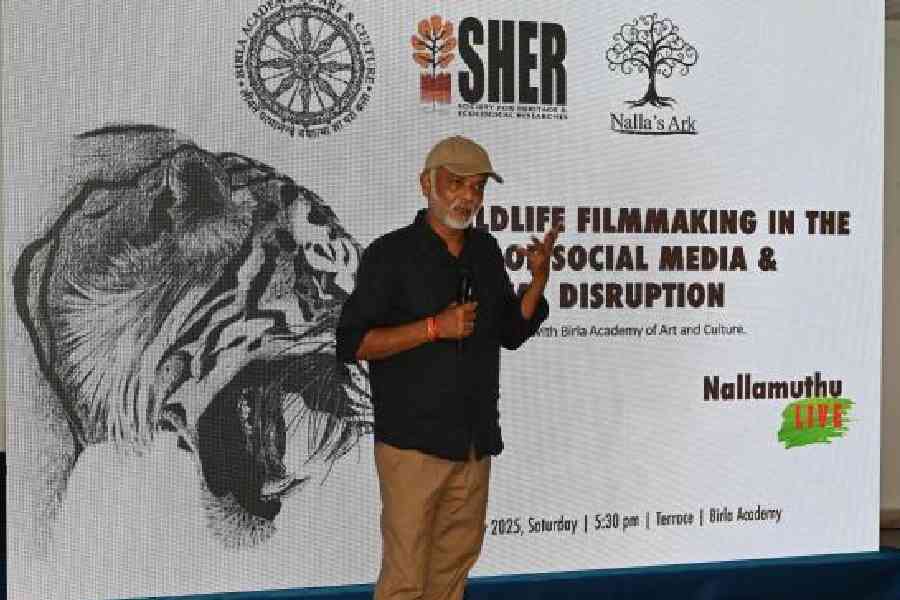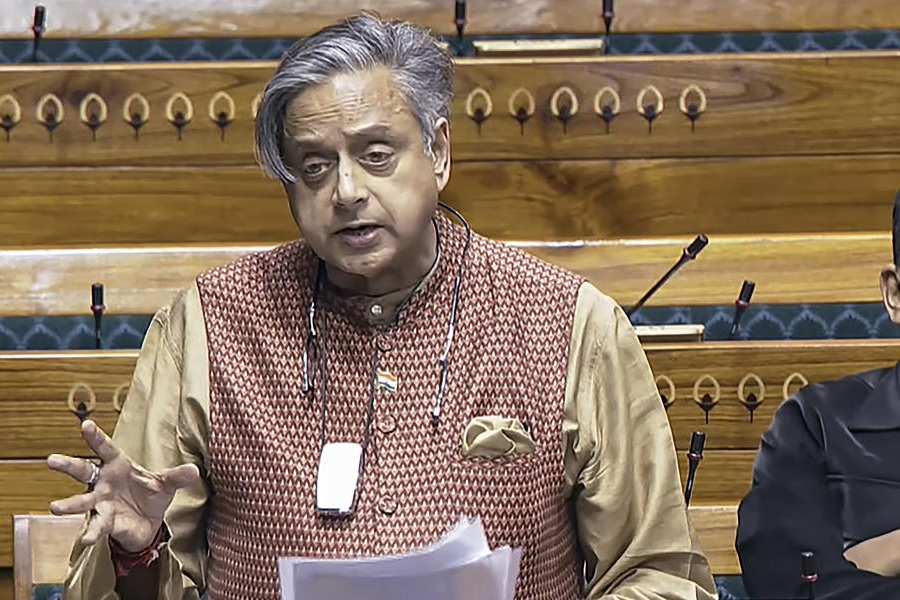A Calcutta audience got a rare glimpse into the world of India’s tigers through the lens of one of its foremost wildlife chroniclers.
At the Birla Academy on Southern Avenue, award-winning wildlife filmmaker Subbiah Nallamuthu conducted a masterclass on Saturday evening, taking the audience through his journey.
He emphasised the importance of authenticity in today’s fast-paced world, dominated by reels. He advised budding wildlife photographers to take the time to understand the subject, to forego the lure of stock shots, and instead immerse themselves in the setting. There was no shortcut to a good shot, he said.
“You must understand animal behaviour. Don’t go into the forest with a preconceived notion. Don’t look for stock shots. Follow the animal’s behaviour and you will get the beautiful moments you are looking for,” said Nallamuthu.
He talked at length about one of his most-loved films, The World’s Most Famous Tiger.
The documentary is a tribute to Machli, the legendary tigress of Ranthambore National Park in Rajasthan. The film delves into Machli’s life within the park, exclusive footage of her interactions with humans, coexistence with other tigers, and even her final days.
On Saturday, the director delved into his journey of documenting Machli’s life and the bond between the tigers and the local communities of Ranthambore, who draw sustenance from the tiger tourism.
An alumnus of the Film and Television Institute of India, Nallamuthu gained prominence with his work on Living on the Edge, the long-running and award-winning environment series.
Nallamuthu’s passion for the tiger has led to five documentaries for the National Geographic Channel and BBC.
His filmography includes The Tiger Dynasty (2012-2013), Tiger Queen (2010) and The World’s Most Famous Tiger (2017).
Saturday’s session was interactive and informal. It was hosted by the Society for Heritage and Ecological Researches (Sher).
Nallamuthu talked on wildlife filmmaking in the age of social media and digital disruption. He spoke on the marketability of wildlife films in India and the difficulties in finding a producer.
“We have wildlife, but no wildlife channel. Many countries do not have wildlife, but they are making wildlife films. They go to Africa to shoot films. We have so many national parks, tiger reserves. Why cannot we make more wildlife films?” he said.
The evening witnessed screenings of three short films by Nallamuthu, which are awaiting release. Maya, another celebrated tigress in Maharashtra’s Tadoba, and her cubs feature in one of them.
The audience included film students, cinematographers, writers, aspiring filmmakers and wildlife photographers.
“I have heard Nallamuthu before. It is always a pleasure to listen to him. He creates awareness about the forest and tigers through his body of work. What he does is very important. But equally important is how he does that,” said Sugata Guha, advertising professional and writer who has helmed the scripts of popular Bengali films.










